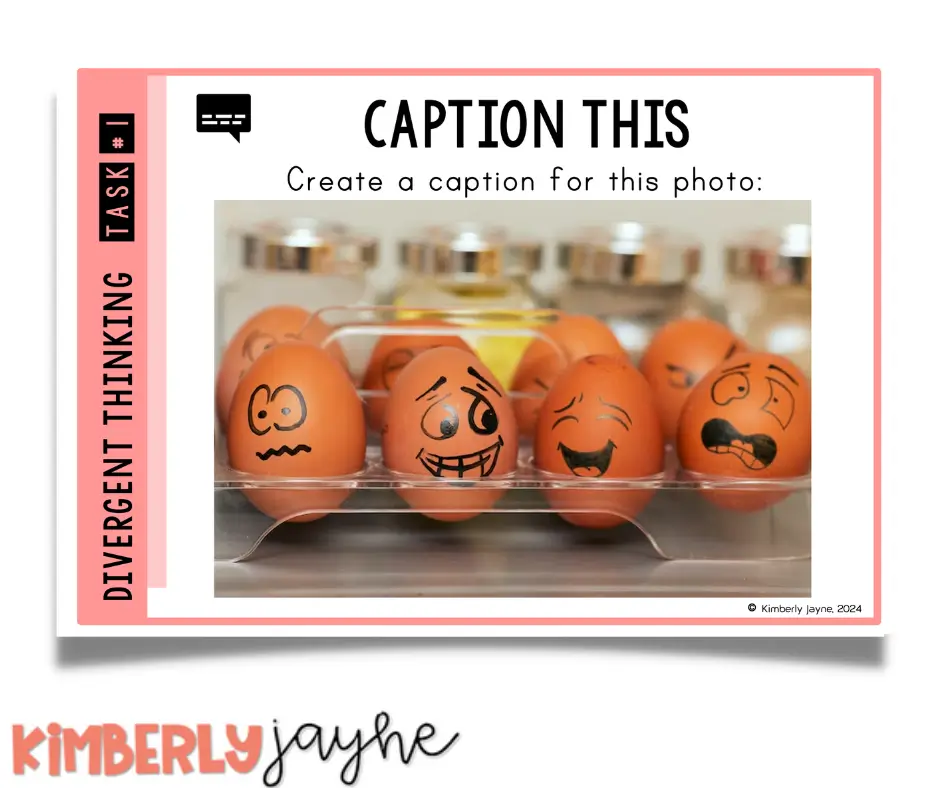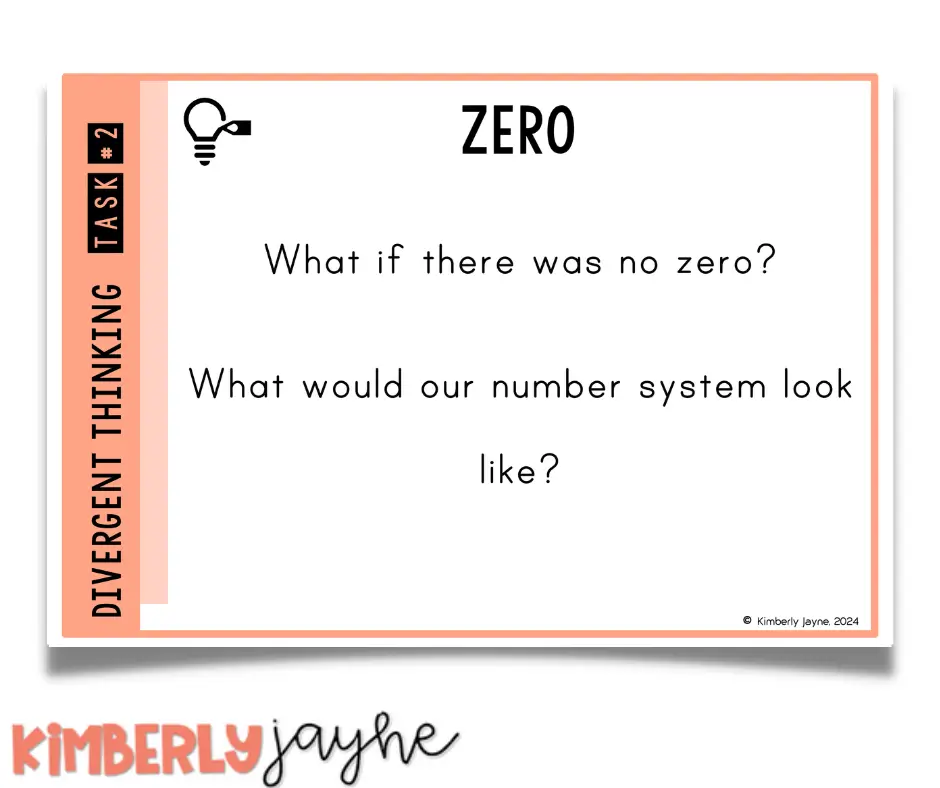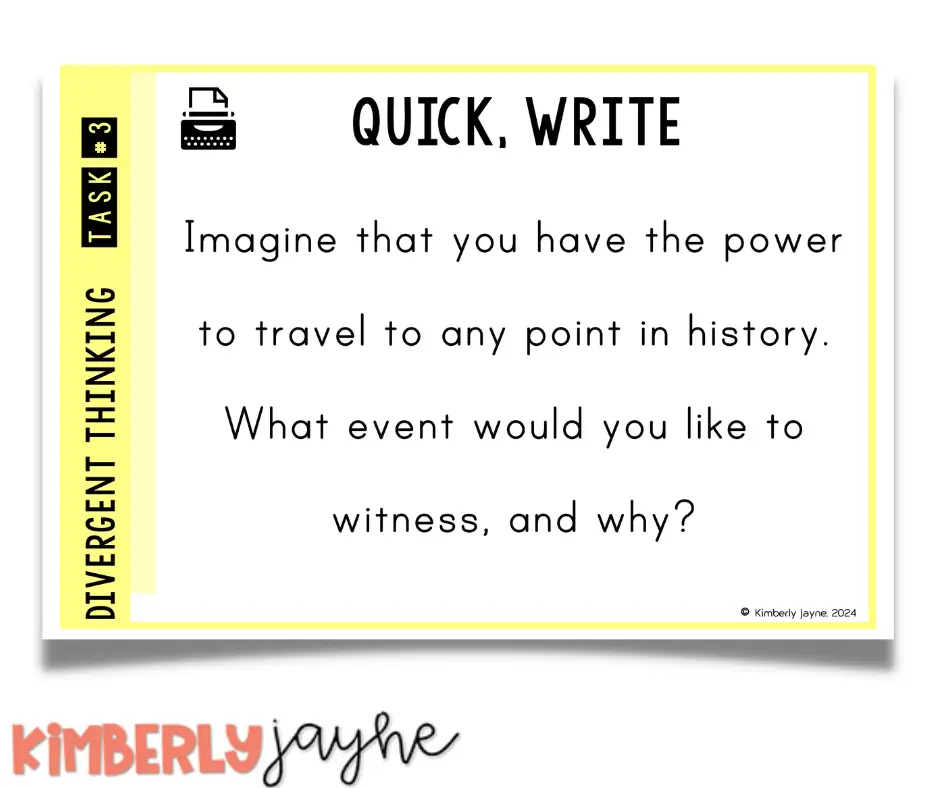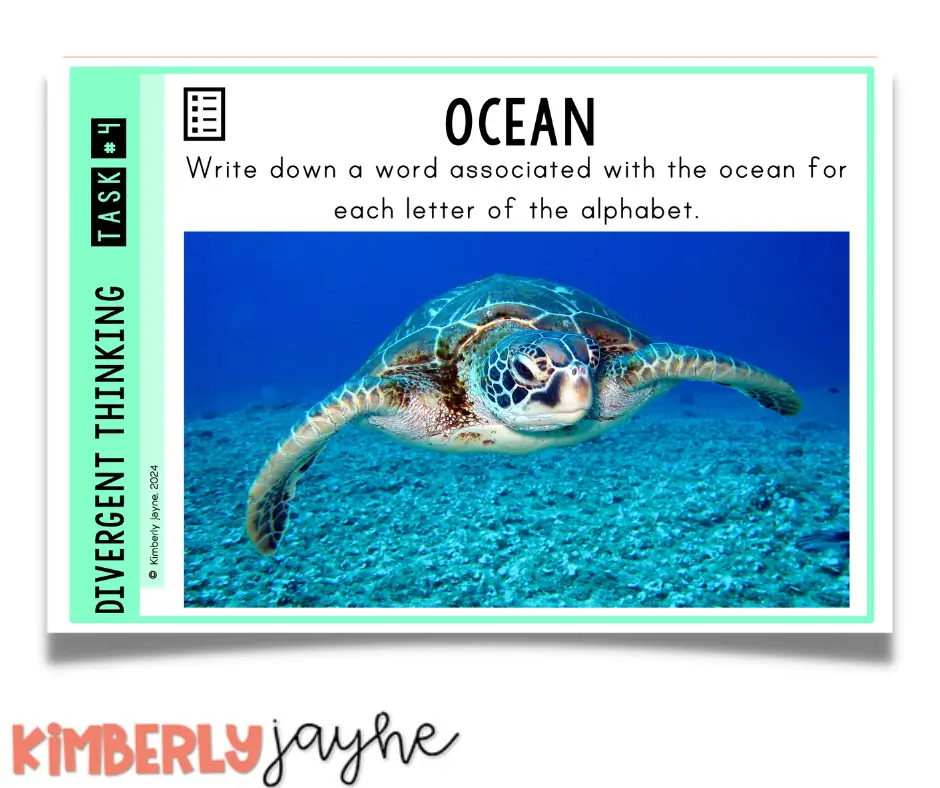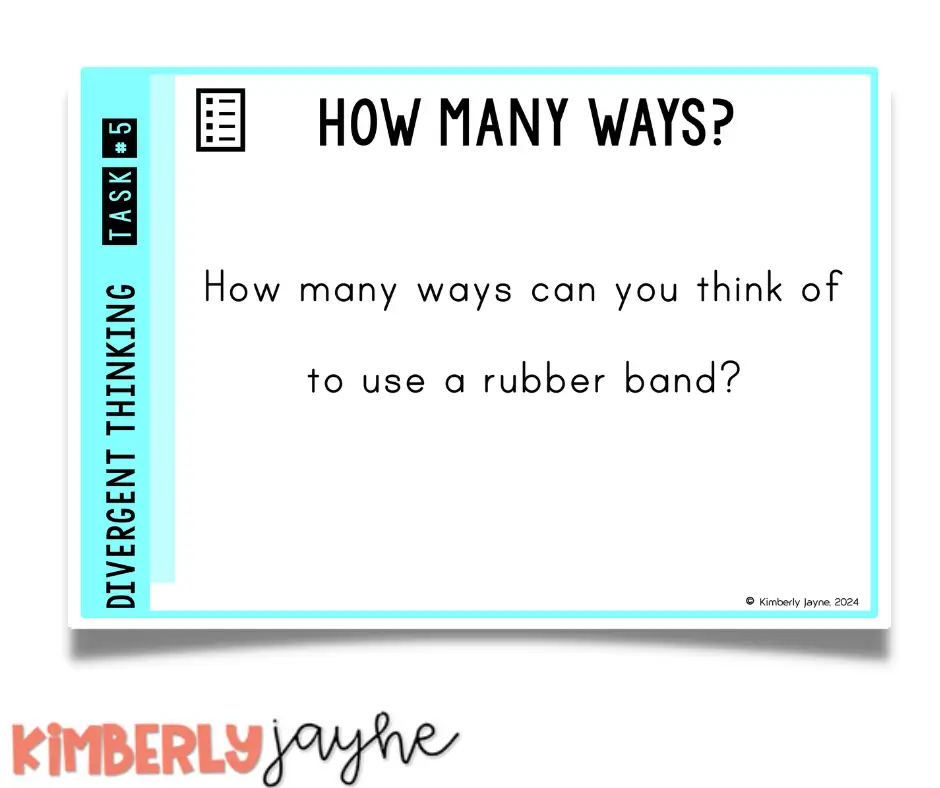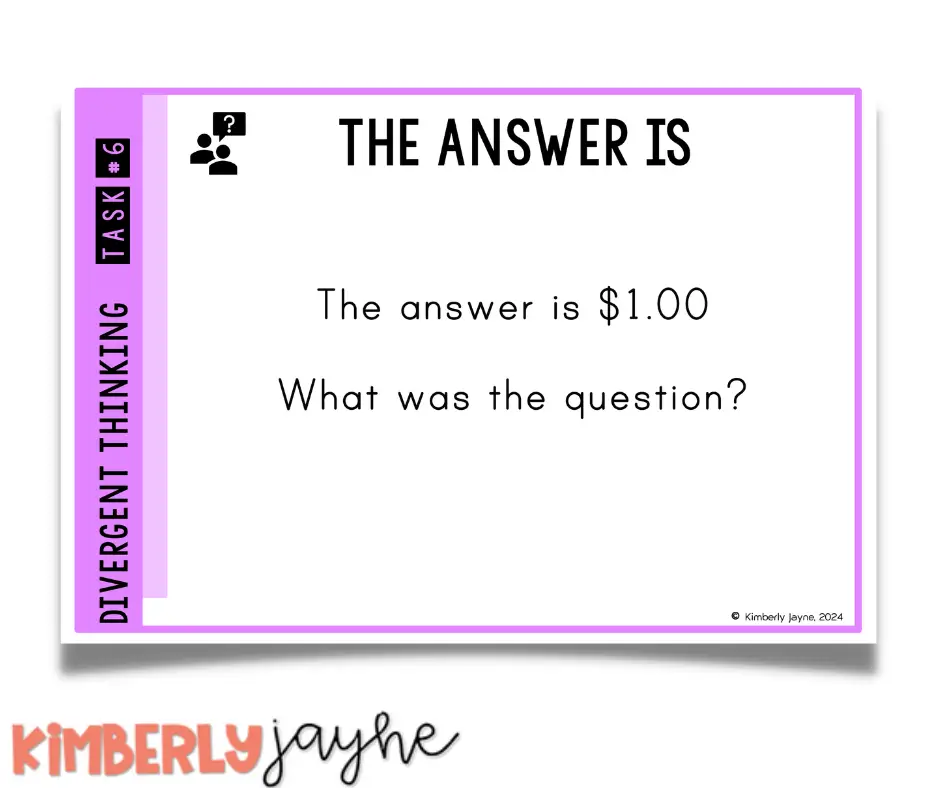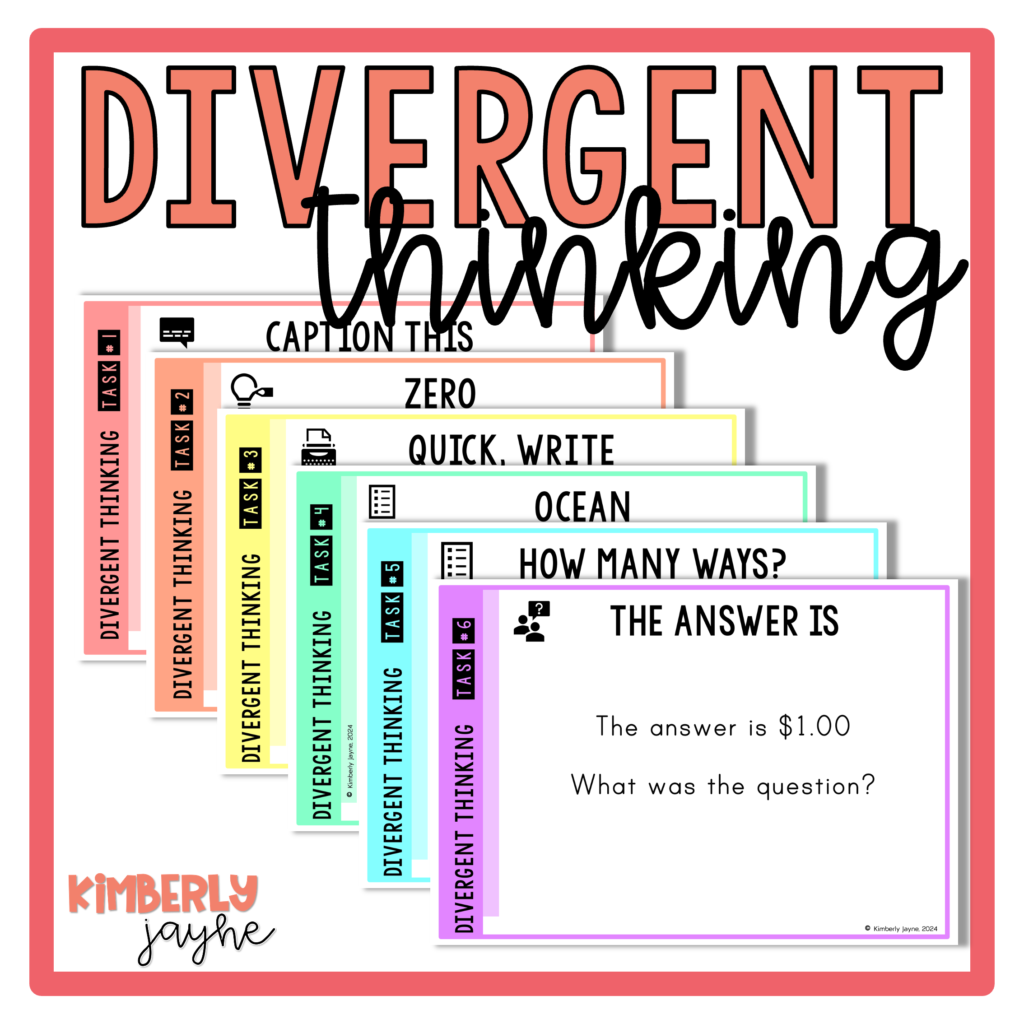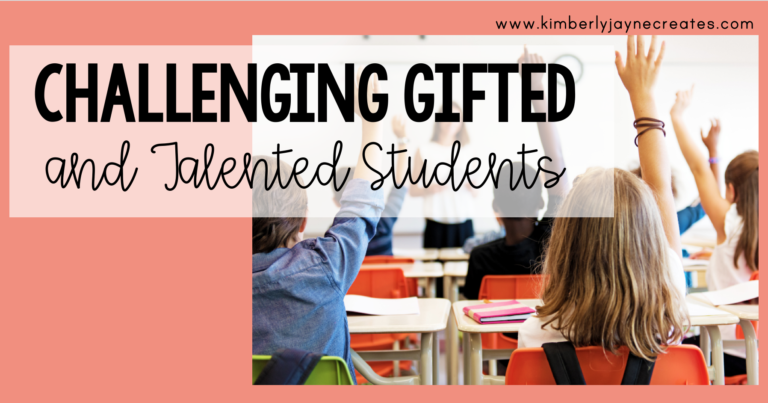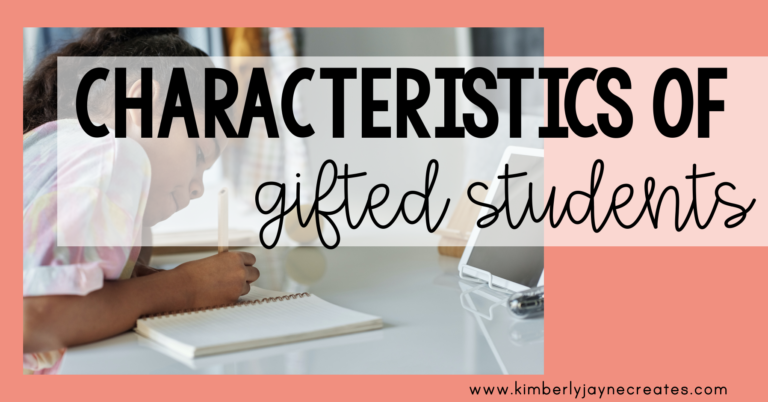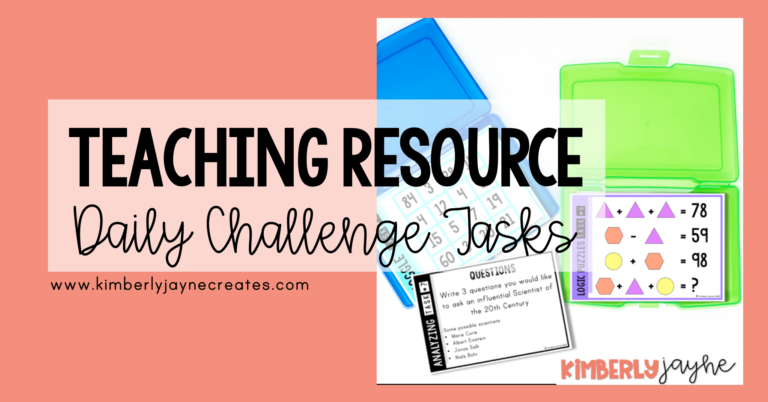Promoting Divergent Thinking as an Enrichment Strategy for Gifted Learners
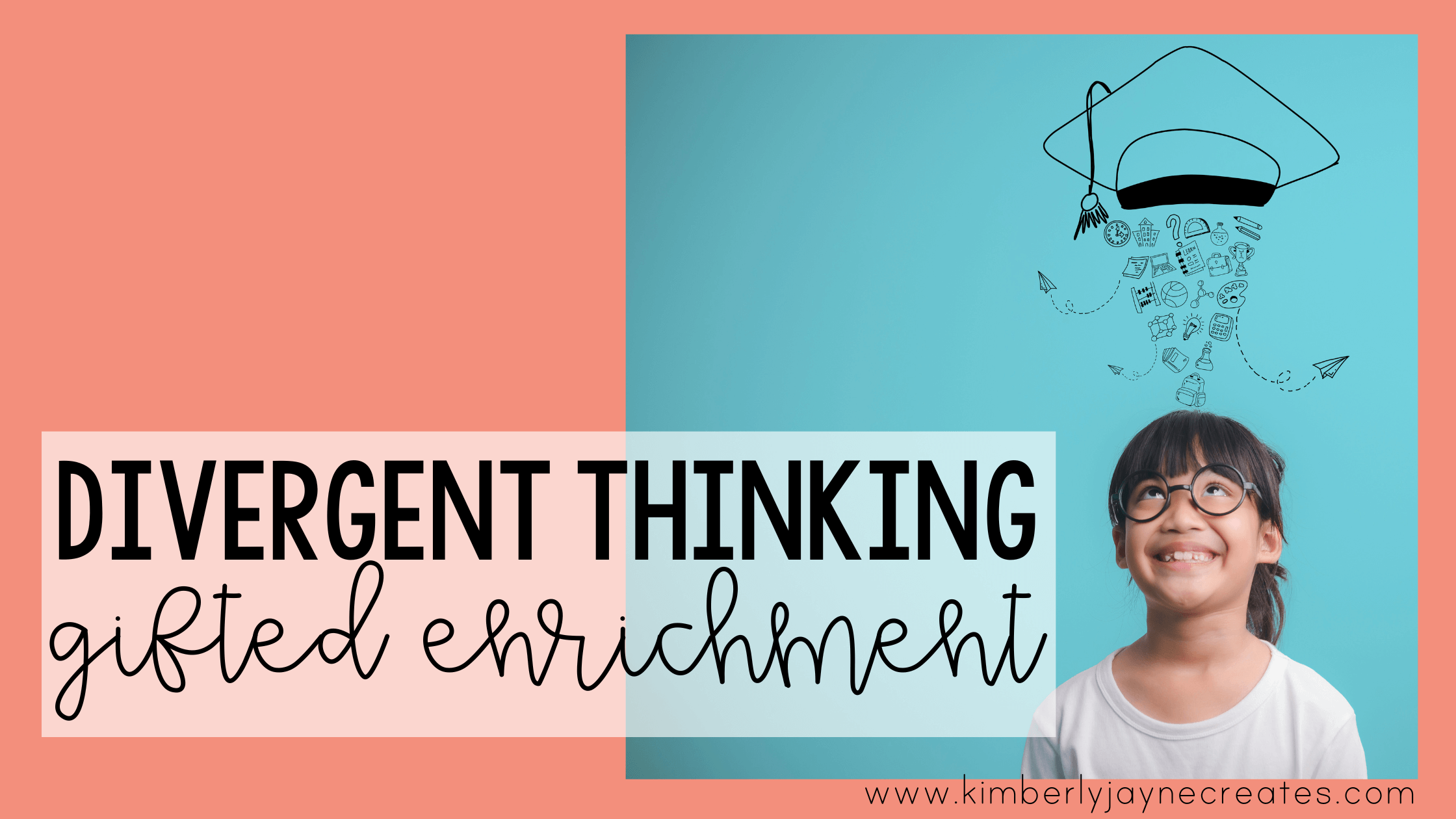
Imagine sitting in a classroom day after day, bored, patiently waiting for your peers to learn a concept that you mastered straight away. Enduring the slow pace and lack of challenge daily, your needs remaining unmet. Imagine doing this for years. We know that up to half of gifted students underachieve in schools (Commonwealth, 2001). However research shows us that providing challenging learning experiences daily is how we can motivate our gifted students to learn (Reis, Renzulli & Renzulli, 2021).
If you have gifted and talented students in your class (hint: you do) then you NEED to use divergent thinking as an enrichment strategy! Promoting divergent thinking in education encourages gifted learners to generate many solutions to a single problem or idea. It fosters creativity and appeals to gifted and talented students’ natural tendency to complex thinking. I know that challenging gifted and talented students in the classroom can feel like another thing to add to our already overflowing to do lists. So, I am going to show you how to can cater to your high ability students in the classroom each and every day without having to do lots of extra planning and marking.
Understanding Divergent Thinking
Divergent thinking is a thought process used to generate lots of creative ideas through the exploration of many possible solutions. Divergent thinking is synonymous with creative thinking. As with lateral thinking, divergent thinking is another form of ‘thinking outside the box’. Whilst lateral thinking involves thinking creatively to find one solution. Divergent thinking involves thinking creatively to find many solutions. The goal of divergent thinking is to generate as many different ideas as you can about a topic in a short period of time. This typically occurs in a spontaneous, free-flowing manner and teachers are encouraged to accept all ideas without judgement. For instance, when faced with a question like “How many uses can you think of for a paperclip?”, students are challenged to think divergently and develop many ideas that may be abstract and creative. Teachers can increase the challenge by introducing a time limit. This lends itself well to gifted and talented students who have an advanced cognitive development and thrive on complexity. These students are engaged by higher order thinking tasks that allow them complexity and challenge. Divergent thinking in education ignites a spark of creativity in our gifted learners and empowers them to approach challenges from different perspectives and with resilience.
The Significance of Divergent Thinking in Education
Giving gifted and talented the students the opportunity to use divergent thinking skills in the classroom will nurture their intellect and unlock their potential. Some of the benefits include:
- Encouraging creativity
- Challenging perfectionism
- Equipping students with cognitive flexibility
- Promoting critical thinking
- Allowing opportunity for collaboration
By embracing divergent thinking in education as an enrichment strategy, teachers can empower gifted students to effectively address complex challenges and cultivate innovative solutions that align with 21st Century classrooms. Ultimately, we don’t know what the future will look like and those students capable of approaching problems from unique perspectives are likely to to shape the future and find success.
Apple Inc. is known for being innovative and taking a divergent approach. We can see this in the creation of the iPod in the early 2000s. Instead of following the crowd, Apple’s design team, took a creative path to develop a small music player that combined style, ease of use, and connection to digital music libraries. They brainstormed, made prototypes, and tested with users to create the iPod—a tiny device that could store thousands of songs and work seamlessly with iTunes software. Apple’s divergent thinking not only transformed how we use electronics but also influenced others in the tech world, shaping our relationship with technology.
As teachers, let’s embrace divergent thinking in education and encourage our gifted learners to think outside the box and think divergently, just like Apple’s design team.
Divergent Thinking Activities to Challenge Gifted Students
Teachers can introduce divergent thinking activities during morning work, early finisher tasks, fun homework challenges as well as alongside the regular curriculum.
The Paper Roll activity is a great way to introduce divergent thinking in education:
Here are a few examples of Divergent Thinking Activities you can include in your classroom:
Caption This
These caption writing tasks act as effective divergent thinking exercises by prompting individuals to distil complex ideas or emotions into concise, creative statements that capture various interpretations and perspectives.
What if Scenarios
Pose hypothetical situations or questions (e.g., What if humans could fly?) and prompt students to explore the potential consequences or possibilities.
Role Reversal
Have students take on the perspective of someone else (e.g., a historical figure, an animal, or an object) and express their thoughts, feelings, and experiences from that viewpoint.
Quick Write
Using quick write prompts students write non-stop about the topic for a short period of time. The idea is to write down whatever comes to mind about the prompt without stopping to proofread or revise the writing. This can help generate a variety of thoughts about a topic in a short period of time.
Open Ended Questions
Open-ended math questions withhold numerical values and encourage students to list as many possible answers as they can.
A-Z Challenge
This is a divergent brainstorming activity that involves generating a list of words associated with a topic for every letter of the alphabet. This one is always a favourite of my gifted students!
How Many Ways
This is a divergent brainstorming activity that involves generating a list of ideas in a creative, unstructured manner. The goal is to generate as many ideas as possible in a short period of time. Encourage students to records all ideas, no idea should be disregarded or criticised.
Random Word Association
Provide students with a random word and challenge them to generate as many associations, connections, or ideas related to that word as possible.
The Answer Is
“Answer is” tasks present a unique divergent thinking challenge by providing students with a predetermined answer whereby they have to generate a list of possible questions that could lead to that answer.
Divergent thinking activities are vital in nurturing the creative and critical thinking skills in gifted and talented learners. By incorporating these activities into your classroom, you are providing a safe and challenging learning environment for students who thrive when given complex thinking tasks. I encourage you to explore and experiment with these activities and watch how it transforms your classroom and unlocks the potential of your high ability students! Comment and let me know how you went.
FREE Divergent Thinking Tasks
Are you ready to try some divergent thinking tasks in your classroom? Click here to try out this FREE pack of activities!
References
Commonwealth. (2001). The Education of Gifted and Talented Children
Reis, S. M., Renzulli, S. J., & Renzulli, J. S. (2021). Enrichment and Gifted Education Pedagogy to Develop Talents, Gifts, and Creative Productivity. Education Sciences, 11(10), 615. https://doi.org/10.3390/educsci11100615
Sir Ken Robinson. (2010, October). Changing education paradigms. Ted.com; TED Talks. https://www.ted.com/talks/sir_ken_robinson_changing_education_paradigms
